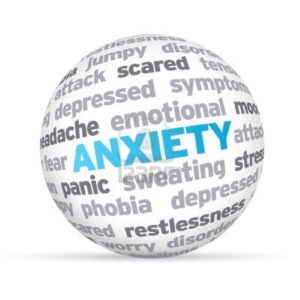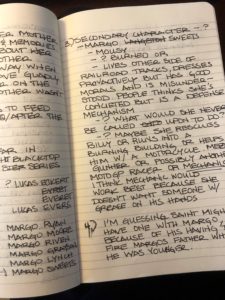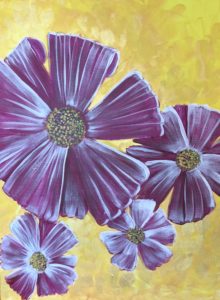 My most productive day of writing is on Tuesdays. I don’t understand why I seem to be able to write the best on that day more so than others. It is perplexing.
My most productive day of writing is on Tuesdays. I don’t understand why I seem to be able to write the best on that day more so than others. It is perplexing.
Why is it that my mind can focus on the task of writing someplace other than my desk, in my home where I always have access to my computer, my writing space? What psychology is at work? It goes back to my first confession about procrastination.
I went in search of ways to circumvent my procrastination, and this is what I found. An article in Psychology Today, online, says, “Procrastination in large part reflects our perennial struggle with self-control as well as our inability to accurately predict how we’ll feel tomorrow, or the next day. “I don’t feel like it” takes precedence over goals; however, it then begets a downward spiral of negative emotions that deter future effort.”[1] It also says, “Perfectionists are often procrastinators; it is psychologically more acceptable to never tackle a task than to face the possibility of falling short on performance.”[2]
Now, I know I’m not a perfectionist by any means, but I do have goals with my writing and artwork, but the negativity of failure keeps sneaking in, blackening my mind, pulling me away from what needs doing. And when I add even more to my to-do list the dominos keep tumbling down and I can’t catch up fast enough to stop the consequences as they continue to fall away from me.
To add to the stack of black tiles with white dots, I’m starting my own business to sell my art called WjK ARTiSAN DESiGNS. I’m excited but I’m also terrified. But without the risk, there cannot be the success. So, I’m going for it.
I want to keep the dominoes from falling. What do I do to fend off procrastination? How do I control what needs to happen so my writing, the planning for my business, and my home life tasks all get done? I must break them down into smaller stacks and obtainable goals.
One of the reasons I procrastinate is because I always have other responsibilities at home. It’s why I write outside of my house at coffee shops, things that need to get done in my daily routine as a Mom disappear. There are no dishes or laundry to get to. I don’t feel I need to get back home to do any of that and I can be free to write. There is a time frame, but when I have my headphones on blocking out all the other noise of life, I can concentrate on the words that I’m putting on the page.
Dr. Jo Minden, Ph. D., in the article Beat Procrastination in 3 Steps[3], also on the Psychology Today website, talks about breaking things down into smaller tasks and making it easier on myself so I can start something rather than pushing it off until later. He also talks about procrastination as something that stems from anxiety. I would never have thought of it that way because I don’t ever feel nervous or sick to my stomach. As an observer, I can see why this would be the case. Based on my fear of failure which I talked about in my first confessional his conclusion makes sense. So now what?
Dr. Minden says, “Think about what needs to be done, how to make it happen, how long it will take, and whether it’s possible to break the project into smaller and more manageable pieces.”[4] My writing and artwork are in this category. Building stories bring together a lot of parts. It is overwhelming most of the time. Thinking about how I’ve gone about the planning for the next novel in my Hot Blacktop series, Hot Turns, when do I stop answering questions about my characters and their story arcs before I start writing the actual words for each chapter? Am I procrastinating by not beginning the chapters? Maybe. As for my art, there’s a constant stream of ideas that I sketch and don’t start the final drawing. Is that procrastination. I say yes, again. Because, in my head I’m hearing, “It’s not quite good enough, keep sketching, Wendi.” It’s like I’m a perpetual student that never gets a job in the real world. Ugh. Even writing this blog is making me frustrated and angry at myself. I can see what I’m doing as a write this, talking it out with you, but all I want to do is read another romance novel.
Admitting the problem is half the battle, right? I must force myself to keep scheduling my tasks, limiting my addiction, to read as an avoidance tactic, and get my goals or tasks crossed off one by one. Make each task smaller, more manageable. Even thinking about what I must do makes my eyes go to my e-reader. It’s a scary revelation.
[1] “Procrastination.” Psychology Today, 3 July 2017, www.psychologytoday.com/us/basics/procrastination.
[2] “Procrastination.” Psychology Today, 3 July 2017, www.psychologytoday.com/us/basics/procrastination.
[3] Minden, Joel. “Beat Procrastination in 3 Steps.” Psychology Today, 7 Nov. 2016, www.psychologytoday.com/us/blog/cbt-and-me/201611/beat-procrastination-in-3-steps.
[4] Minden, Joel. “Beat Procrastination in 3 Steps.” Psychology Today, 7 Nov. 2016, www.psychologytoday.com/us/blog/cbt-and-me/201611/beat-procrastination-in-3-steps.


